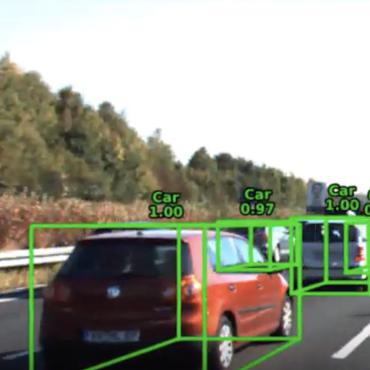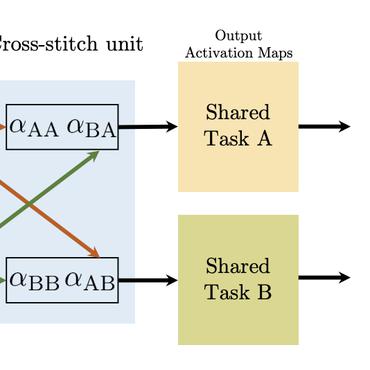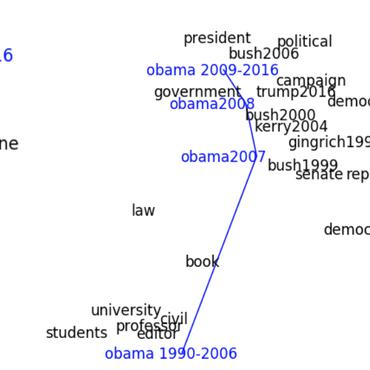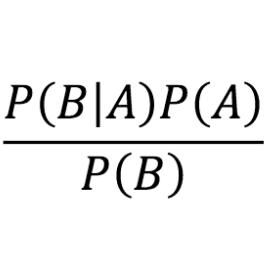Search Results for author: Justin Solomon
Found 55 papers, 36 papers with code
Nuclear Norm Regularization for Deep Learning
no code implementations • 23 May 2024 • Christopher Scarvelis, Justin Solomon
Our method is simple, efficient, and accurate, enabling Jacobian nuclear norm regularization to scale to high-dimensional deep learning problems.
Asymmetry in Low-Rank Adapters of Foundation Models
1 code implementation • 26 Feb 2024 • Jiacheng Zhu, Kristjan Greenewald, Kimia Nadjahi, Haitz Sáez de Ocáriz Borde, Rickard Brüel Gabrielsson, Leshem Choshen, Marzyeh Ghassemi, Mikhail Yurochkin, Justin Solomon
Specifically, when updating the parameter matrices of a neural network by adding a product $BA$, we observe that the $B$ and $A$ matrices have distinct functions: $A$ extracts features from the input, while $B$ uses these features to create the desired output.
Closed-Form Diffusion Models
no code implementations • 19 Oct 2023 • Christopher Scarvelis, Haitz Sáez de Ocáriz Borde, Justin Solomon
In this work, we instead explicitly smooth the closed-form score to obtain an SGM that generates novel samples without training.
Variational Barycentric Coordinates
no code implementations • 5 Oct 2023 • Ana Dodik, Oded Stein, Vincent Sitzmann, Justin Solomon
We propose a variational technique to optimize for generalized barycentric coordinates that offers additional control compared to existing models.
GeRA: Label-Efficient Geometrically Regularized Alignment
no code implementations • 1 Oct 2023 • Dustin Klebe, Tal Shnitzer, Mikhail Yurochkin, Leonid Karlinsky, Justin Solomon
We introduce a semi-supervised Geometrically Regularized Alignment (GeRA) method to align the embedding spaces of pretrained unimodal encoders in a label-efficient way.
Large Language Model Routing with Benchmark Datasets
no code implementations • 27 Sep 2023 • Tal Shnitzer, Anthony Ou, Mírian Silva, Kate Soule, Yuekai Sun, Justin Solomon, Neil Thompson, Mikhail Yurochkin
There is a rapidly growing number of open-source Large Language Models (LLMs) and benchmark datasets to compare them.
Data-Free Learning of Reduced-Order Kinematics
1 code implementation • 5 May 2023 • Nicholas Sharp, Cristian Romero, Alec Jacobson, Etienne Vouga, Paul G. Kry, David I. W. Levin, Justin Solomon
Physical systems ranging from elastic bodies to kinematic linkages are defined on high-dimensional configuration spaces, yet their typical low-energy configurations are concentrated on much lower-dimensional subspaces.
Deep Augmentation: Self-Supervised Learning with Transformations in Activation Space
no code implementations • 25 Mar 2023 • Rickard Brüel-Gabrielsson, Tongzhou Wang, Manel Baradad, Justin Solomon
We use this observation to formulate a method for selecting which layer to target; in particular, our experimentation reveals that targeting deeper layers with Deep Augmentation outperforms augmenting the input data.
Sampling with Mollified Interaction Energy Descent
2 code implementations • 24 Oct 2022 • Lingxiao Li, Qiang Liu, Anna Korba, Mikhail Yurochkin, Justin Solomon
These energies rely on mollifier functions -- smooth approximations of the Dirac delta originated from PDE theory.
Outlier-Robust Group Inference via Gradient Space Clustering
1 code implementation • 13 Oct 2022 • Yuchen Zeng, Kristjan Greenewald, Kangwook Lee, Justin Solomon, Mikhail Yurochkin
Traditional machine learning models focus on achieving good performance on the overall training distribution, but they often underperform on minority groups.
Riemannian Metric Learning via Optimal Transport
no code implementations • 18 May 2022 • Christopher Scarvelis, Justin Solomon
We introduce an optimal transport-based model for learning a metric tensor from cross-sectional samples of evolving probability measures on a common Riemannian manifold.
Symmetric Volume Maps: Order-Invariant Volumetric Mesh Correspondence with Free Boundary
1 code implementation • 5 Feb 2022 • S. Mazdak Abulnaga, Oded Stein, Polina Golland, Justin Solomon
Although shape correspondence is a central problem in geometry processing, most methods for this task apply only to two-dimensional surfaces.
Log-Euclidean Signatures for Intrinsic Distances Between Unaligned Datasets
1 code implementation • 3 Feb 2022 • Tal Shnitzer, Mikhail Yurochkin, Kristjan Greenewald, Justin Solomon
We use manifold learning to compare the intrinsic geometric structures of different datasets by comparing their diffusion operators, symmetric positive-definite (SPD) matrices that relate to approximations of the continuous Laplace-Beltrami operator from discrete samples.
Rewiring with Positional Encodings for Graph Neural Networks
no code implementations • 29 Jan 2022 • Rickard Brüel-Gabrielsson, Mikhail Yurochkin, Justin Solomon
As a conservative alternative, we use positional encodings to expand receptive fields to $r$-hop neighborhoods.
Wassersplines for Neural Vector Field--Controlled Animation
1 code implementation • 28 Jan 2022 • Paul Zhang, Dmitriy Smirnov, Justin Solomon
Trajectories are then computed by advecting keyframes through the velocity field.
Learning Proximal Operators to Discover Multiple Optima
1 code implementation • 28 Jan 2022 • Lingxiao Li, Noam Aigerman, Vladimir G. Kim, Jiajin Li, Kristjan Greenewald, Mikhail Yurochkin, Justin Solomon
We present an end-to-end method to learn the proximal operator of a family of training problems so that multiple local minima can be quickly obtained from initial guesses by iterating the learned operator, emulating the proximal-point algorithm that has fast convergence.
DeepCurrents: Learning Implicit Representations of Shapes with Boundaries
1 code implementation • CVPR 2022 • David Palmer, Dmitriy Smirnov, Stephanie Wang, Albert Chern, Justin Solomon
Recent techniques have been successful in reconstructing surfaces as level sets of learned functions (such as signed distance fields) parameterized by deep neural networks.
Volumetric Parameterization of the Placenta to a Flattened Template
1 code implementation • 15 Nov 2021 • S. Mazdak Abulnaga, Esra Abaci Turk, Mikhail Bessmeltsev, P. Ellen Grant, Justin Solomon, Polina Golland
However, due to the curved and highly variable in vivo shape of the placenta, interpreting and visualizing these images is difficult.
DETR3D: 3D Object Detection from Multi-view Images via 3D-to-2D Queries
1 code implementation • 13 Oct 2021 • Yue Wang, Vitor Guizilini, Tianyuan Zhang, Yilun Wang, Hang Zhao, Justin Solomon
This top-down approach outperforms its bottom-up counterpart in which object bounding box prediction follows per-pixel depth estimation, since it does not suffer from the compounding error introduced by a depth prediction model.
 Ranked #7 on
Robust Camera Only 3D Object Detection
on nuScenes-C
Ranked #7 on
Robust Camera Only 3D Object Detection
on nuScenes-C
Object DGCNN: 3D Object Detection using Dynamic Graphs
1 code implementation • NeurIPS 2021 • Yue Wang, Justin Solomon
Our method models 3D object detection as message passing on a dynamic graph, generalizing the DGCNN framework to predict a set of objects.
$k$-Mixup Regularization for Deep Learning via Optimal Transport
no code implementations • 29 Sep 2021 • Kristjan Greenewald, Anming Gu, Mikhail Yurochkin, Justin Solomon, Edward Chien
To better leverage the structure of the data, we extend mixup to $k$-mixup by perturbing $k$-batches of training points in the direction of other $k$-batches using displacement interpolation, i. e. interpolation under the Wasserstein metric.
Polygonal Building Extraction by Frame Field Learning
1 code implementation • CVPR 2021 • Nicolas Girard, Dmitriy Smirnov, Justin Solomon, Yuliya Tarabalka
While state of the art image segmentation models typically output segmentations in raster format, applications in geographic information systems often require vector polygons.
k-Mixup Regularization for Deep Learning via Optimal Transport
1 code implementation • 5 Jun 2021 • Kristjan Greenewald, Anming Gu, Mikhail Yurochkin, Justin Solomon, Edward Chien
Our empirical results show that training with $k$-mixup further improves generalization and robustness across several network architectures and benchmark datasets of differing modalities.
Do Neural Optimal Transport Solvers Work? A Continuous Wasserstein-2 Benchmark
6 code implementations • NeurIPS 2021 • Alexander Korotin, Lingxiao Li, Aude Genevay, Justin Solomon, Alexander Filippov, Evgeny Burnaev
Despite the recent popularity of neural network-based solvers for optimal transport (OT), there is no standard quantitative way to evaluate their performance.
Large-Scale Wasserstein Gradient Flows
3 code implementations • NeurIPS 2021 • Petr Mokrov, Alexander Korotin, Lingxiao Li, Aude Genevay, Justin Solomon, Evgeny Burnaev
Specifically, Fokker-Planck equations, which model the diffusion of probability measures, can be understood as gradient descent over entropy functionals in Wasserstein space.
MarioNette: Self-Supervised Sprite Learning
1 code implementation • NeurIPS 2021 • Dmitriy Smirnov, Michael Gharbi, Matthew Fisher, Vitor Guizilini, Alexei A. Efros, Justin Solomon
Artists and video game designers often construct 2D animations using libraries of sprites -- textured patches of objects and characters.
Improving Approximate Optimal Transport Distances using Quantization
no code implementations • 25 Feb 2021 • Gaspard Beugnot, Aude Genevay, Kristjan Greenewald, Justin Solomon
Optimal transport (OT) is a popular tool in machine learning to compare probability measures geometrically, but it comes with substantial computational burden.
Continuous Wasserstein-2 Barycenter Estimation without Minimax Optimization
2 code implementations • ICLR 2021 • Alexander Korotin, Lingxiao Li, Justin Solomon, Evgeny Burnaev
Wasserstein barycenters provide a geometric notion of the weighted average of probability measures based on optimal transport.
Outlier Robust Optimal Transport
no code implementations • 1 Jan 2021 • Debarghya Mukherjee, Aritra Guha, Justin Solomon, Yuekai Sun, Mikhail Yurochkin
In light of recent advances in solving the OT problem, OT distances are widely used as loss functions in minimum distance estimation.
$k$-Variance: A Clustered Notion of Variance
no code implementations • 13 Dec 2020 • Justin Solomon, Kristjan Greenewald, Haikady N. Nagaraja
We introduce $k$-variance, a generalization of variance built on the machinery of random bipartite matchings.
Empirical Sampling of Connected Graph Partitions for Redistricting
1 code implementation • 8 Dec 2020 • Lorenzo Najt, Daryl DeFord, Justin Solomon
Second, we analyze the robustness of the qualitative properties of typical districting plans with respect to score functions and a certain lattice-like graph, called the state-dual graph, that is used as a discretization of geographic regions in most districting analysis.
Physics and Society Statistical Mechanics 62P25, 82-05 K.4.1; G.3
Redistricting Algorithms
no code implementations • 18 Nov 2020 • Amariah Becker, Justin Solomon
Why not have a computer just draw a map?
Data Structures and Algorithms Computers and Society K.4.0
Multi-Frame to Single-Frame: Knowledge Distillation for 3D Object Detection
no code implementations • 24 Sep 2020 • Yue Wang, Alireza Fathi, Jiajun Wu, Thomas Funkhouser, Justin Solomon
A common dilemma in 3D object detection for autonomous driving is that high-quality, dense point clouds are only available during training, but not testing.
Continuous Regularized Wasserstein Barycenters
1 code implementation • NeurIPS 2020 • Lingxiao Li, Aude Genevay, Mikhail Yurochkin, Justin Solomon
Leveraging a new dual formulation for the regularized Wasserstein barycenter problem, we introduce a stochastic algorithm that constructs a continuous approximation of the barycenter.
Pillar-based Object Detection for Autonomous Driving
1 code implementation • ECCV 2020 • Yue Wang, Alireza Fathi, Abhijit Kundu, David Ross, Caroline Pantofaru, Thomas Funkhouser, Justin Solomon
We present a simple and flexible object detection framework optimized for autonomous driving.
Model Fusion with Kullback--Leibler Divergence
1 code implementation • ICML 2020 • Sebastian Claici, Mikhail Yurochkin, Soumya Ghosh, Justin Solomon
Our algorithm relies on a mean field assumption for both the fused model and the individual dataset posteriors and proceeds using a simple assign-and-average approach.
Polygonal Building Segmentation by Frame Field Learning
2 code implementations • 30 Apr 2020 • Nicolas Girard, Dmitriy Smirnov, Justin Solomon, Yuliya Tarabalka
While state of the art image segmentation models typically output segmentations in raster format, applications in geographic information systems often require vector polygons.
Automatic phantom test pattern classification through transfer learning with deep neural networks
no code implementations • 22 Jan 2020 • Rafael B. Fricks, Justin Solomon, Ehsan Samei
Imaging phantoms are test patterns used to measure image quality in computer tomography (CT) systems.
Incorporating Unlabeled Data into Distributionally Robust Learning
no code implementations • 16 Dec 2019 • Charlie Frogner, Sebastian Claici, Edward Chien, Justin Solomon
We examine the performance of this new formulation on 14 real datasets and find that it often yields effective classifiers with nontrivial performance guarantees in situations where conventional DRL produces neither.
Alleviating Label Switching with Optimal Transport
1 code implementation • NeurIPS 2019 • Pierre Monteiller, Sebastian Claici, Edward Chien, Farzaneh Mirzazadeh, Justin Solomon, Mikhail Yurochkin
Label switching is a phenomenon arising in mixture model posterior inference that prevents one from meaningfully assessing posterior statistics using standard Monte Carlo procedures.
Recombination: A family of Markov chains for redistricting
4 code implementations • 31 Oct 2019 • Daryl DeFord, Moon Duchin, Justin Solomon
Redistricting is the problem of partitioning a set of geographical units into a fixed number of districts, subject to a list of often-vague rules and priorities.
Computers and Society Physics and Society 60J10, 05C70, 91F10
Algebraic Representations for Volumetric Frame Fields
1 code implementation • 15 Aug 2019 • David Palmer, David Bommes, Justin Solomon
A key challenge in extending these methods to three dimensions, however, is representation of field values.
Graphics
Hierarchical Optimal Transport for Document Representation
1 code implementation • NeurIPS 2019 • Mikhail Yurochkin, Sebastian Claici, Edward Chien, Farzaneh Mirzazadeh, Justin Solomon
The ability to measure similarity between documents enables intelligent summarization and analysis of large corpora.
Learning Embeddings into Entropic Wasserstein Spaces
2 code implementations • 8 May 2019 • Charlie Frogner, Farzaneh Mirzazadeh, Justin Solomon
Euclidean embeddings of data are fundamentally limited in their ability to capture latent semantic structures, which need not conform to Euclidean spatial assumptions.
Learning Entropic Wasserstein Embeddings
no code implementations • ICLR 2019 • Charlie Frogner, Farzaneh Mirzazadeh, Justin Solomon
Despite their prevalence, Euclidean embeddings of data are fundamentally limited in their ability to capture latent semantic structures, which need not conform to Euclidean spatial assumptions.
Deep Parametric Shape Predictions using Distance Fields
1 code implementation • CVPR 2020 • Dmitriy Smirnov, Matthew Fisher, Vladimir G. Kim, Richard Zhang, Justin Solomon
Many tasks in graphics and vision demand machinery for converting shapes into consistent representations with sparse sets of parameters; these representations facilitate rendering, editing, and storage.
Placental Flattening via Volumetric Parameterization
1 code implementation • 12 Mar 2019 • S. Mazdak Abulnaga, Esra Abaci Turk, Mikhail Bessmeltsev, P. Ellen Grant, Justin Solomon, Polina Golland
We formulate our method as a map from the in vivo shape to a flattened template that minimizes the symmetric Dirichlet energy to control distortion throughout the volume.
Dynamical Optimal Transport on Discrete Surfaces
1 code implementation • 19 Sep 2018 • Hugo Lavenant, Sebastian Claici, Edward Chien, Justin Solomon
We propose a technique for interpolating between probability distributions on discrete surfaces, based on the theory of optimal transport.
Analysis of PDEs Numerical Analysis Numerical Analysis Optimization and Control
Wasserstein Measure Coresets
no code implementations • 18 May 2018 • Sebastian Claici, Aude Genevay, Justin Solomon
The proliferation of large data sets and Bayesian inference techniques motivates demand for better data sparsification.
Gerrymandering and Compactness: Implementation Flexibility and Abuse
1 code implementation • 7 Mar 2018 • Richard Barnes, Justin Solomon
As a case study demonstrating the effect, we show that commonly-used measures of geometric compactness for district boundaries are affected by several factors irrelevant to fairness or compliance with civil rights law.
Computers and Society Computational Geometry
Stochastic Wasserstein Barycenters
3 code implementations • ICML 2018 • Sebastian Claici, Edward Chien, Justin Solomon
We present a stochastic algorithm to compute the barycenter of a set of probability distributions under the Wasserstein metric from optimal transport.
Optimal Transport on Discrete Domains
no code implementations • 23 Jan 2018 • Justin Solomon
Inspired by the matching of supply to demand in logistical problems, the optimal transport (or Monge--Kantorovich) problem involves the matching of probability distributions defined over a geometric domain such as a surface or manifold.
Steklov Spectral Geometry for Extrinsic Shape Analysis
1 code implementation • 21 Jul 2017 • Yu Wang, Mirela Ben-Chen, Iosif Polterovich, Justin Solomon
We propose using the Dirichlet-to-Neumann operator as an extrinsic alternative to the Laplacian for spectral geometry processing and shape analysis.
Graphics
Parallel Streaming Wasserstein Barycenters
1 code implementation • NeurIPS 2017 • Matthew Staib, Sebastian Claici, Justin Solomon, Stefanie Jegelka
Our method is even robust to nonstationary input distributions and produces a barycenter estimate that tracks the input measures over time.
Quantum Optimal Transport for Tensor Field Processing
1 code implementation • 20 Dec 2016 • Gabriel Peyré, Lenaïc Chizat, François-Xavier Vialard, Justin Solomon
This "quantum" formulation of OT (Q-OT) corresponds to a relaxed version of the classical Kantorovich transport problem, where the fidelity between the input PSD-valued measures is captured using the geometry of the Von-Neumann quantum entropy.
Graphics















